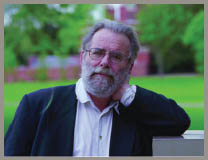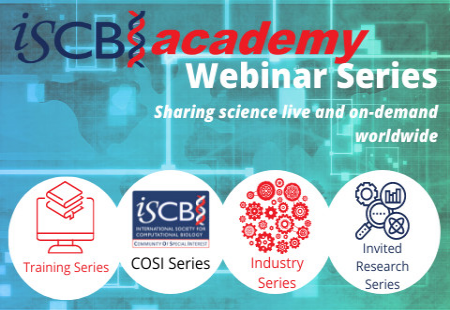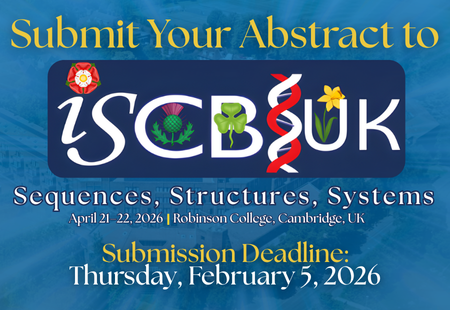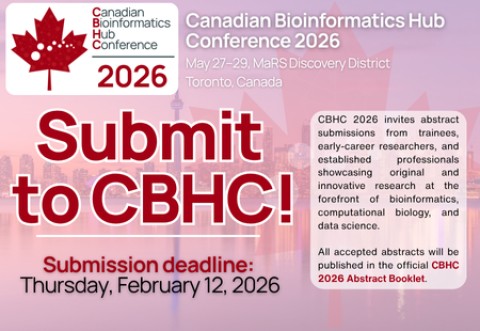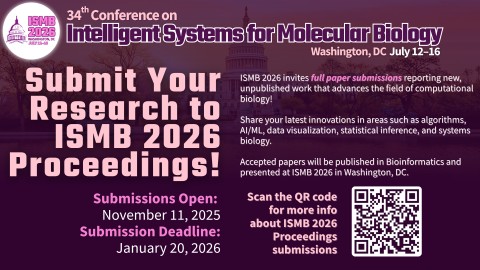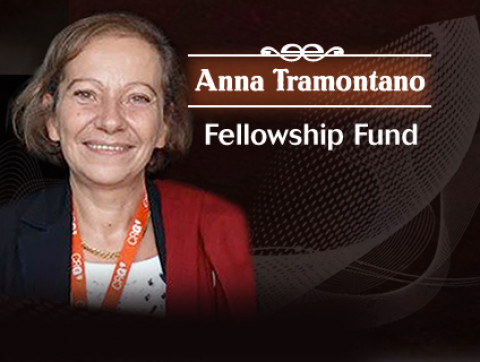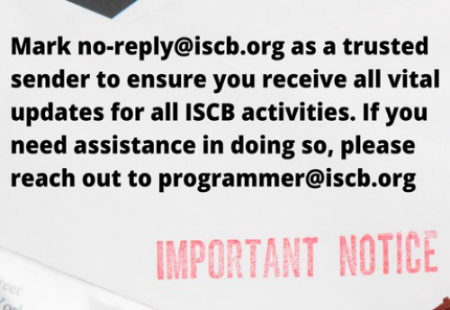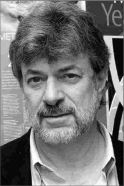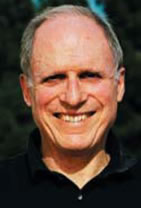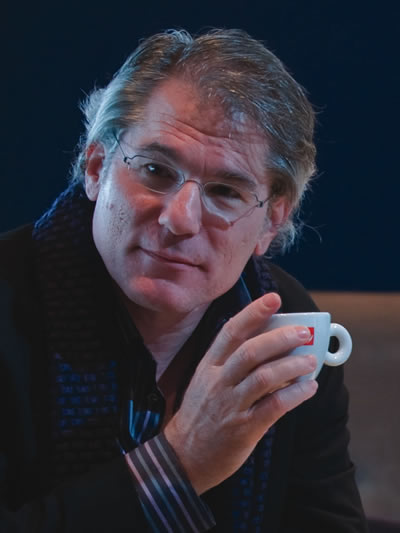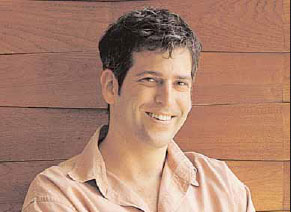ISCB Awards Policies & Procedures
ISCB is currently offering four annual awards, the Overton Prize, the Innovator Award, the ISCB Accomplishment by a Senior Scientist Award, and the Outstanding Contributions to ISCB Award.
Links within this page:
Eligibility for the Overton Prize:
The Overton Prize was established by the ISCB in memory of G. Christian Overton, a major contributor to the field of bioinformatics and a member of the ISCB Board of Directors who died unexpectedly in 2000. The annual prize is awarded for outstanding accomplishment to a scientist in the early to mid-career stage (up to a decade post-degree), who has already made a significant contribution to the field of computational biology.
Eligibility for the ISCB Innovator Award:
The ISCB Innovator Award is given to a leading scientist, 10-20 years post-degree, who consistently makes outstanding contributions to the field of computational biology and continues to forge new directions.
Eligibility for the ISCB Accomplishment by a Senior Scientist Award:
The Senior Scientist Accomplishment Award recognizes a member of the computational biology community who is more than two decades post-degree and has made major contributions to the field of computational biology.
Eligibility for the Outstanding Contributions to ISCB Award
The Outstanding Contributions to ISCB Award is in recognition of outstanding service contributions by any member toward the betterment of ISCB through exemplary leadership, education, service, or a combination of the three.
Nominees must be current ISCB members and application should detail the contributions to ISCB made through leadership, education, service, or a combination of the three, and provide examples of these contributions and service to the society. Nominations submitted to the system will be considered for two consecutive years (if they meet all eligibility criteria) if not selected as the awardee the year of submission. After which, a new nomination must be submitted for consideration.
top
....................................................................................................................................................................
Committee Structure:
The award selection is the responsibility of the Awards Committee, with approval from the ISCB President. (At the Chair’s discretion, a sub-committee can be charged with reviewing nominees and making a recommendation to the Awards Committee Chair regarding selection of a winner of each of the two annual awards.) The committee is composed of at least six members that are appointed by the Board of Directors of ISCB and the ISCB membership at large. Previous award winners will be invited to propose nominees and to champion the nominees in the initial committee discussions, but will not be members of the Awards committee. Duration of terms is three years. After the three-year term membership will not be renewable as such but, every member will be re-electable by the Board of Directors.
Committee membership should be as representative of the ISCB membership as is possible and practical with respect to geographic and academic / institutional interest. All members of the Awards Committee are to be current members of ISCB.
top
....................................................................................................................................................................
Nominations for the Awards:
A letter to the membership will be sent via email on behalf of either the Awards Committee Chair or ISCB President soliciting nominations for the Accomplishment by a Senior Scientist Award. This letter can be in conjunction with other Society news. Nominations should go to the Committee or Sub-Committee Chair and the ISCB Administrative Officer.
Scientific Award Nominations are requested to arrive with:
- A biosketch or curricular information that is sufficient to evaluate the candidate. In particular all graduation dates, all major career steps and the date of the last degree have to be given.
- A succinct but sufficiently detailed exposition of the major accomplishments
- List of up to ten key citations
Outstanding Contributions to ISCB Award Nominations are requested to arrive with:
- A detailed list of service to ISCB
- Area of service
- Up to 500 word motivation statement describing the members contributions
For a nominee to be given full consideration, the nomination should include as much of the requested information as possible, without being more than three pages long. The committee does not have the responsibility to add missing information.
top
....................................................................................................................................................................
Selection Process:
The method of committee communication during the selection process is up to the Chair. However, unless a nominee has the overwhelming approval of all committee members, the process will likely require at least one conference call among the committee members.
Once a selection is made, the Chair must contact the ISCB President with news of the selection and a summary of the rationale behind the decision. Upon gaining approval of the selection from the President, the Committee Chair will contact the winner to share the news. Immediately upon acceptance, the Committee Chair must notify the ISCB Administrative Office to begin making arrangements regarding travel, ordering the medal, notifying the organizers of ISMB, etc.
top
....................................................................................................................................................................
Award Elements:
The winner of either award will be awarded the following:
- Keynote presentation slot during ISMB Conference (ideally on first or last full day of conference) **Scientific Awards Only**
- Travel and Hotel expenses to attend ISMB paid by ISCB
- A personalized award presented at the ISMB meeting
Conferral of the degree is contingent upon the candidate attending the next ISMB Conference and presenting his or her award lecture.
top
....................................................................................................................................................................
Timeline:
In order to allow adequate time for review of nominations and notification to the winner in time to fit into his/her schedule to attend ISMB, the recommended nominations timeline is as follows:
- October of pre-conference year: Letter soliciting nominations
- December 2 of pre-conference year: Nominations cut-off
- end of pre-conference year: Selection of proposed winner and notification to ISCB President
- mid January of conference year: Notification to winner
Each of the above time references represent the latest recommended timing, and every effort should be made to work in advance of said deadlines. However, falling behind in any or all of the above activities will not necessarily prevent ISCB from presenting an Overton Prize, Innovator Award, or Accomplishment by a Senior Scientist Award for that year.
top
....................................................................................................................................................................
Overton Prize Endowment:
ISCB must solicit contributions toward the endowment of the annual Overton Prize through corporate and institutional sponsorships, letters to the membership, newsletter articles, and ISCB membership renewal contribution options. Contributions at the level of $5,000.00 will be acknowledged as Principal Sponsors and all contributions at the level of $1,000.00 or more will be acknowledged as Supporting Sponsors in a brochure distributed at each year’s award of the prize. All contributions are tax deductible.
ISCB Accomplishment by a Senior Scientist Award Endowment:
ISCB must solicit contributions toward the endowment of the annual Accomplishment by a Senior Scientist Award through corporate and institutional sponsorships, letters to the membership, newsletter articles, and ISCB membership renewal contribution options. Contributions at the level of $5,000.00 will be acknowledged as Principal Sponsors and all contributions at the level of $1,000.00 or more will be acknowledged as Supporting Sponsors in a brochure distributed at each year’s award of the prize. All contributions are tax deductible.
TOP
March 10, 2009
Press Release Webb Miller and Trey Ideker to Receive Top International Bioinformatics Awards for 2009 from the International Society for Computational Biology
The International Society for Computational Biology has named Webb Miller of Pennsylvania State University, USA as winner of its Accomplishment by a Senior Scientist Award for 2009, and the 2009 Overton Prize, for scientists in early- to mid-career, will go to Trey Ideker of the University of California, San Diego, USA.
Webb Miller began his career at Penn State in the late 1960’s as a computer scientist. By the time he entered the emerging field of bioinformatics in 1987 he was already a full professor there. Initially, his research revolved around developing algorithms for aligning pairs of DNA or protein sequences; he worked on the algorithms that were used in the BLAST program for searching databases for similar sequences, which is still one of the most widely used bioinformatics tools worldwide. His interests then changed to methods for aligning long DNA sequences and extracting functional information from them. Miller has made important contributions to the analysis of many vertebrate genomes including those of the mouse, chicken and rhesus macaque. He collaborated with David Haussler – his immediate predecessor as ISCB Senior Scientist Accomplishment Award winner – in the development of sequence-alignment software for the UCSC Genome Browser, which now provides access to about fifty complete genome sequences. Haussler praised Miller on being named for the 2009 award by saying, “Webb has played an essential role in nearly every vertebrate genome sequence project: he developed the first program capable of accurate comparative alignment for entire vertebrate-sized genomes.” Miller’s recent research interests include the bioinformatics of species extinction, and in November 2008 he published a paper in Nature that described a draft sequence for the woolly mammoth genome. In 2004 he was appointed to a chair in biology alongside the chair appointment he already held in computer science.
Established in 2003, ISCB’s Accomplishment by a Senior Scientist Award recognizes members of the computational biology community who have made major contributions to the field through research, education, service, or a combination of the three. Miller will be joining a prestigious group of previous winners, which includes David Sankoff (University of Ottawa, Canada), David Lipman (US National Center for Biotechnology Information, USA), Janet Thornton (European Bioinformatics Institute, UK), Mike Waterman (University of Southern California, USA), Temple Smith (Boston University, USA) and David Haussler (University of California, Santa Cruz, USA).
Trey Ideker also started his career as an engineer and computer scientist. A burgeoning interest in molecular biology led him to join a graduate program in molecular biology run by Leroy Hood, founder of the Institute of Systems Biology in Seattle, Washington. There, he began to model and analyse networks of molecular interactions using genome-scale measurements, an emerging field in which he became a pioneer. He was still a Ph.D. student when, in 2001, he published a classic paper demonstrating how biological networks are mapped and tested using a systems biology approach that has attracted well over 800 citations to date. He then took a fellowship at the prestigious Whitehead Institute for Biomedical Research in Cambridge, Massachusetts before joining the faculty at UCSD in 2003, where he is now an associate professor. In recent years, Ideker has developed a number of influential bioinformatics methods and resources including Cytoscape, a widely used open source program for visualising molecular networks. In 2003, his group was the first to demonstrate that protein networks can be aligned and compared across species, just like genome sequences. Since then, he has extended network comparison to incorporate many different interaction types, and used network-based methods to map the DNA damage response, compare host and pathogen networks, and classify diseases. He has already received many honours and was recognised as one of the top 10 innovators of 2006 by MIT’s Technology Review. Aviv Regev, the 2008 ISCB Overton Prize winner, commends the selection of Ideker for the 2009 award. "Trey's work has epitomized the power of integrating innovative computational methods with cutting-edge genomics. His pioneering work has set a model for doing systems biology that has been followed by numerous groups and has impacts for understanding the evolution of biological systems and for treating disease".
The Overton Prize was established in 2001 in memory of G. Christian Overton, a major contributor to the field of bioinformatics and member of the ISCB Board of Directors who died suddenly the previous year. The prize is awarded for outstanding accomplishment to a scientist in the early- to mid-career who has already made a significant contribution to the field of computational biology. Previous recipients are Christopher Burge (Massachusetts Institute of Technology, Boston, USA), David Baker (University of Washington, USA), W. James Kent (University of California, Santa Cruz, USA), Uri Alon (Weizmann Institute of Science, Israel), Ewan Birney (European Bioinformatics Institute, UK), Mathieu Blanchette (McGill University, Canada), Eran Segal (Weizmann Institute of Science, Israel), Aviv Regev (The Broad Institute of Harvard and MIT, USA).
ISCB Award recipients are selected from among nominations received from the computational biology community. The awards committee thoroughly reviews the merits of all nominees and unanimously decides on a recommendation of each award winner to be approved by the ISCB president. Both awards will be presented at the Society’s prestigious Annual International Conference on Intelligent Systems for Molecular Biology (ISMB), being held jointly with the European Conference on Computational Biology (ECCB) in Stockholm, Sweden, June 29–July 2.
------------
For more information, please contact:
This email address is being protected from spambots. You need JavaScript enabled to view it.
Executive Officer, ISCB
+1 858 822 0852
Note to Editors
The International Society for Computational Biology (ISCB) serves over 2500 members from nearly 70 countries around the world by addressing scientific policies, providing access to high quality publications, organizing regional and international conferences, and serving as a portal to information about training, education, employment and news from related fields.
TOP
